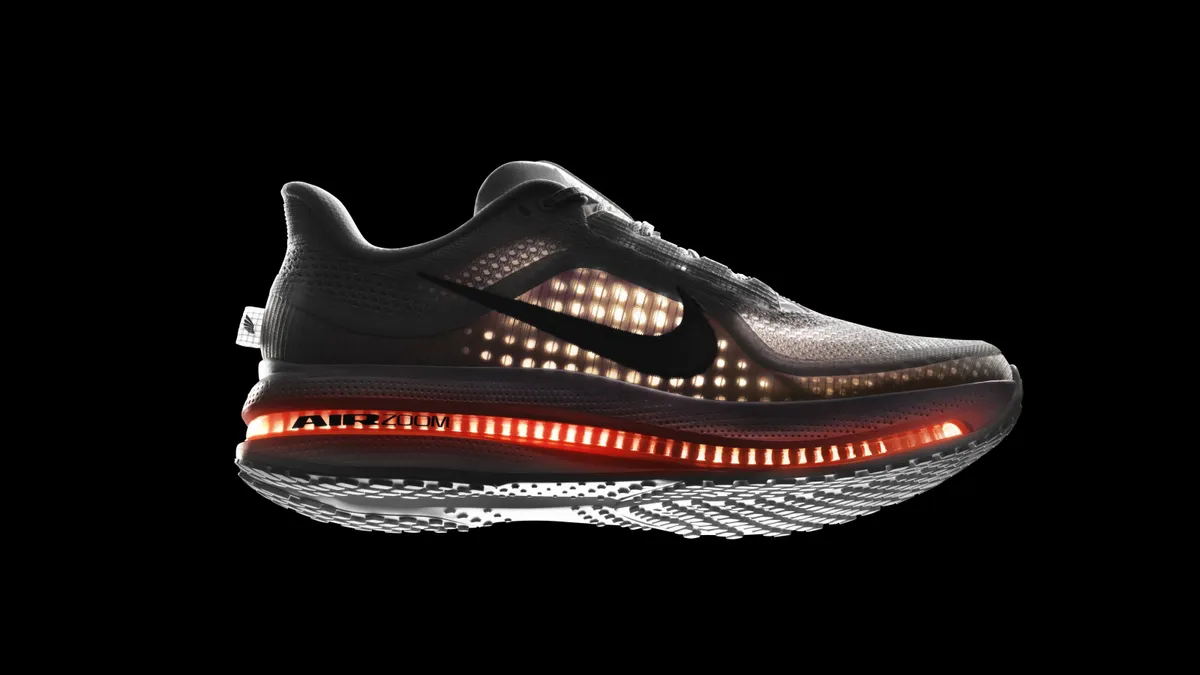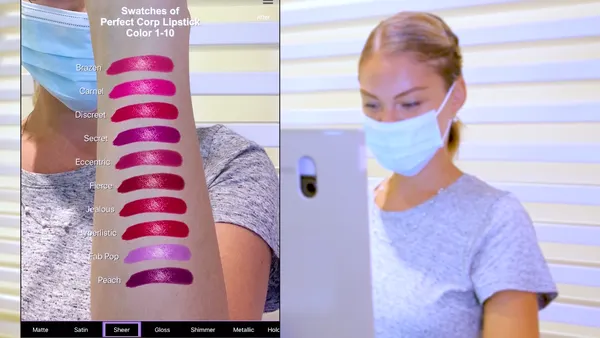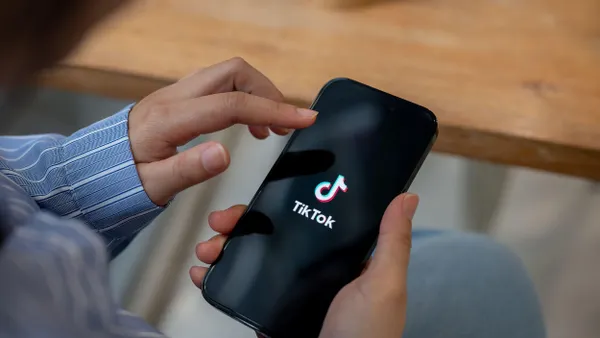Dive Brief:
- Following two consecutive quarters of flat revenue, Nike introduced a new product lineup as part of a “multi-year innovation cycle,” the activewear giant announced Thursday. As part of the initiative, Nike is debuting improvements to its Air cushioning platform across sports, which athletes will wear during the Summer Olympics.
- The brand released its first visible Air Zoom unit in the Pegasus Premium running shoe, which uses ZoomX and ReactX foam to return more energy to runners, according to the company. The Nike Blueprint Pack, a collection of footwear featuring Air technology for track and road racing, basketball, soccer, skating, breakdancing and other activities, will launch this summer.
- The company also announced A.I.R., an acronym for Athlete Imagined Revolution. The initiative is a co-creation process between Nike designers and 13 of its professional athletes to build future Air products.
Dive Insight:
Nike’s new innovation cycle comes just weeks after CEO John Donahoe said the brand needed to invest in a better product innovation flow and admitted it was “not performing at our potential.”
The new products Nike is debuting ahead of the Summer Olympics are part of a multiyear innovation cycle, during which it will debut “game-changing innovations” in its product portfolio, including in new markets, Heidi O’Neill, president of consumer, product and brand, said in a statement. Nike used data from its Nike Sport Research Lab, as well as computational design, to create the improved Air footwear, according to the announcement.
“For more than 50 years we’ve listened to and over-delivered for our athletes with the best of Nike innovation. We always push the boundaries of what’s possible and take risks to help create the future of sport together,” John Hoke, Nike’s chief innovation officer, said in a statement. “This summer, the difference maker is the massive energy return that Nike Air delivers to athletes.Taking what we learned from our super-shoe technology, we’re introducing new Nike Air Zoom shapes and sensations across all sports.”
Nike’s efforts to freshen up its product assortment come as the company works to improve financially. Last December, the company said it aims to save $2 billion over the next three years through layoffs, increased automation and a simplified product portfolio. It also reported $13.4 billion in second-quarter revenue, a modest 0.5% increase from the previous year.
The next quarter, the company reported $12.4 billion in Q3 revenue, about the same year-over-year. Its DTC sales grew slightly, while its wholesale division saw a 3% bump to $6.6 billion. The company at the time also said it plans to lean further into wholesale after its DTC strategy introduced challenges.
Analysts noted Nike’s lack of product innovation, and the retailer in Piper Sandler’s most recent teen survey was losing share to more innovative brands like Hoka and On. Wedbush analyst Tom Nikic pointed to a potentially strong start of the brand’s new innovation cycle thanks to the successful debut of the Air Max DN a few weeks ago. Nikic at the time said that while a successful product launch is “a positive data point for the brand,” one shoe won’t be enough for a substantial shift. “They will need to continue bringing innovative new products to the market,” Nikic said.












